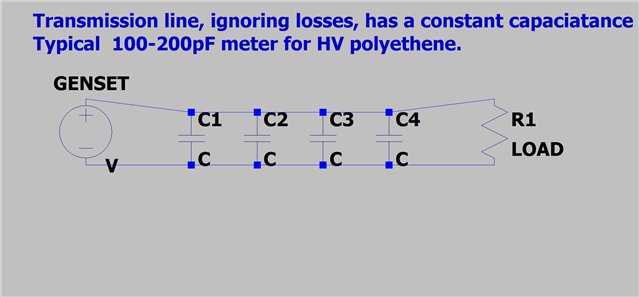Hi everyone,
For long cables at 132kV, 50Hz, charging current (capacitive current) may be a problem and, therefore, the breaker must be adequately rated. Typical rated line charging current are around 160A for new breakers. If the charging current is high, say 130A (long distance cable with no compensation), although not ideal, a breaker with a rated line charging current of 160A should, in theory, be sufficiently rated to handle those charging currents without adding compensation measures. Is this correct? Finally, what happens to cable itself? The 130A charging current may circulate between the phase and the earthed metallic screen of the cable. Would a 130A charging current be sustainable for the metallic screen of the cable without compensation?
Thank you
